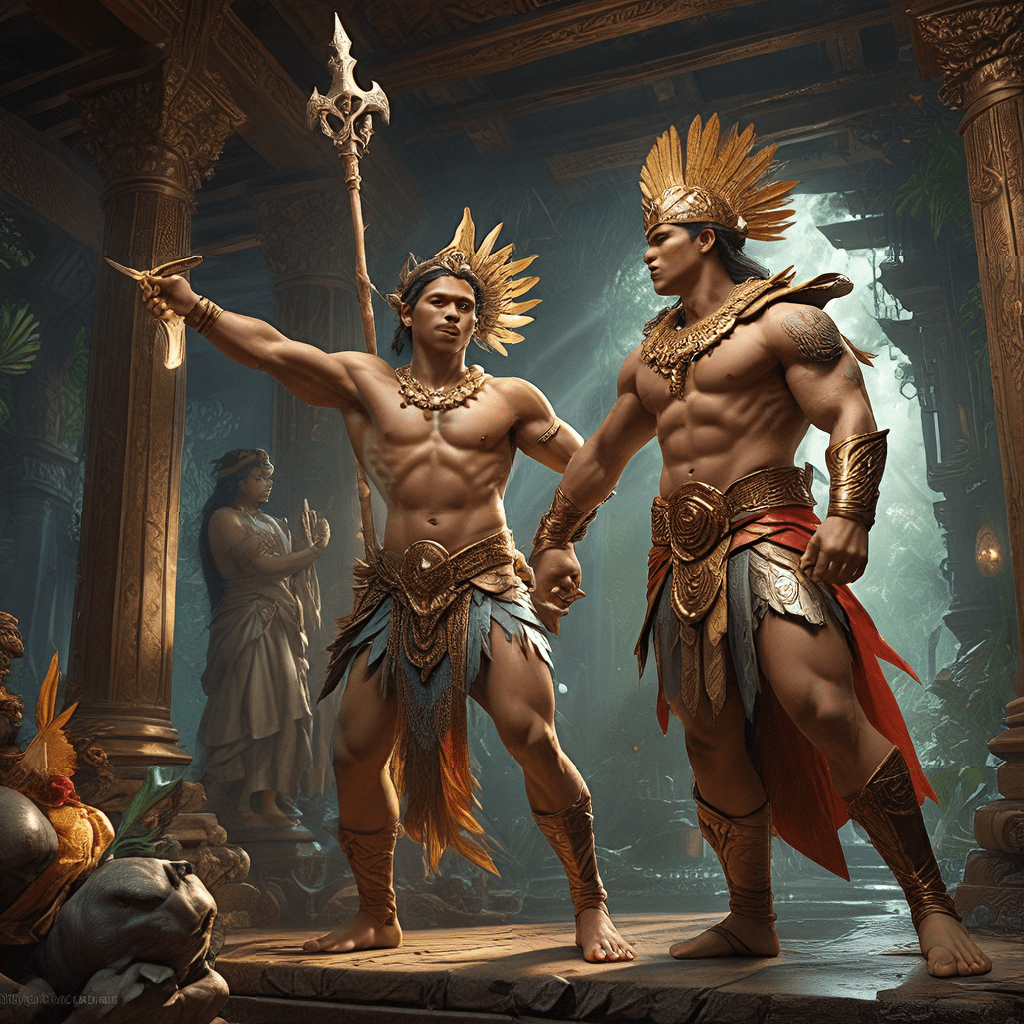Filipino Mythology: An Introduction
The Philippines, an archipelago nation in Southeast Asia, boasts a rich tapestry of mythology and folklore. Tales of gods, goddesses, mythical creatures, and magical beings have been passed down through generations, shaping the cultural identity of the Filipino people. These stories, woven into the fabric of everyday life, offer a glimpse into the beliefs, values, and worldview of the ancestors. From the awe-inspiring creation myths to the cautionary tales of supernatural beings, Filipino mythology provides a fascinating window into the human experience.
The Mythological Concept of Transformation
Transformation, the act of changing form or shape, plays a central role in Filipino Mythology. It is a recurring theme that underscores the dynamic and ever-changing nature of the world. These transformations can be physical, spiritual, or even metaphorical, reflecting the power of change and the ability to adapt to new circumstances. This concept of transformation permeates various aspects of Filipino mythology, from the creation myths to the tales of mythical creatures.
Transformation and the Divine
In Filipino mythology, the divine beings are often depicted as having the ability to transform themselves. For example, Bathala, the supreme creator god, is said to have multiple forms, allowing him to interact with the world in various ways. Other deities, like the goddess of the moon, Mayari, are known for their shape-shifting abilities. This ability to transform highlights the power and flexibility of the divine, emphasizing their role as both creators and protectors. In many instances, these transformations serve as a manifestation of divine power, signifying the ability to influence and manipulate the natural world.
The Nature Spirits (Engkanto) and Their Transformations
The Engkanto, also known as nature spirits, are a prominent feature in Filipino folklore. These supernatural beings, who reside in nature, are believed to have the power to transform themselves into various forms. They can appear as beautiful fairies, mischievous goblins, or even ferocious creatures. These metamorphoses are often associated with their connection to the natural world. Their ability to change form allows them to blend in with their surroundings, offering them protection and allowing them to interact with the human world in subtle and sometimes unpredictable ways.
The Shapeshifting Creatures of Philippine Folklore
The shapeshifting creatures of Philippine folklore are another testament to the transformation motif. Among the most well-known is the Manananggal, a creature that can detach its upper body and transform into a winged, bat-like form. This ability allows the Manananggal to hunt for human prey, emphasizing the dual nature of their existence – both beautiful and terrifying. Other creatures like the Tikbalang, the Aswang, and the Duwende, which can transform into animals or other human forms, reflect the belief that the boundaries between the human and supernatural worlds are porous and can be manipulated.
Transformation as a Test of Character
In many Filipino myths, transformation serves as a test of character. Individuals may be forced to undergo physical or spiritual changes to prove their worth, their loyalty, or their resilience. Often, these transformations come with trials and challenges, pushing the protagonists to the limits of their strength and determination. The ability to navigate these transformative experiences demonstrates their inner strength and their capacity to overcome adversity. For example, in the story of "The Seven Sisters," the seven daughters of a king must undergo a series of trials, including transforming into birds, to prove their worthiness of marriage. These transformations highlight the importance of enduring hardship and demonstrating courage and strength in the face of challenges.
Transformation as a Means of Escape
In other tales, transformation offers a means of escape from danger. People may transform themselves into animals or other beings to avoid capture, persecution, or even death. These transformations highlight the resourcefulness of the characters and their ability to adapt to difficult circumstances. For example, in the myth of the "Tikbalang," a creature that can shape-shift into a horse, transformation provides a way to navigate the treacherous forest and outsmart those who threaten them. This theme of escape through transformation reinforces the idea that even in the face of danger, there is always hope for survival and a path to freedom.
Transformation and the Cycle of Life and Death
The concept of transformation is also intertwined with the cycle of life and death in Filipino mythology. Many stories explore the idea that death is not an end but a transition to another form of existence. People may transform into spirits or mythical creatures after death, preserving their essence in another realm. This theme reflects the cyclical nature of existence, suggesting that change is an inevitable and ongoing process. For example, the myth of the "Aswang," a creature that can transform into a vampire, illustrates this connection between life, death, and transformation. The Aswang's ability to change form highlights the ambiguous nature of life and death, where boundaries between the two realms blur.
Transformation as a Manifestation of Magic
Magic plays a significant role in Filipino mythology, and transformation is often a manifestation of supernatural powers. Characters may be able to transform themselves or others through the use of spells, charms, or potions. This use of magic emphasizes the existence of a hidden world where ordinary rules are suspended and the impossible becomes possible. The ability to transform through magic often serves as a symbol of power, wisdom, and control over the natural world.
The Enduring Power of Transformation in Filipino Culture
The theme of transformation continues to hold a powerful influence in Filipino culture. These stories and beliefs have shaped the worldview of Filipinos, reminding them of the constant state of flux in the world. The ability to transform, whether physically, spiritually, or metaphorically, represents the resilience, adaptability, and the spirit of innovation that characterizes the Filipino people.
FAQ
What are some popular examples of transformation in Filipino mythology?
- The Manananggal: A creature that detaches its upper body and transforms into a winged, bat-like form.
- The Tikbalang: A creature that can shape-shift into a horse.
- The Aswang: A creature that can transform into a vampire.
- The Engkanto: Nature spirits who can transform themselves into various forms.
- Bathala: The supreme creator god, who is said to have multiple forms.
What is the significance of transformation in Filipino mythology?
Transformation is a central theme that reflects the dynamic and ever-changing nature of the world. It represents the power of change, the ability to adapt to new circumstances, and the interconnectedness of the human and supernatural realms.
How does the concept of transformation affect Filipino culture?
The theme of transformation continues to influence Filipino culture, shaping the worldview of Filipinos and reminding them of the constant state of flux in the world. It emphasizes the importance of resilience, adaptability, and innovation.
What are some of the lessons that can be learned from the concept of transformation in Filipino mythology?
The concept of transformation teaches us to embrace change, to adapt to new challenges, and to never lose hope in the face of adversity. It also highlights the importance of understanding and appreciating the diverse and interconnected nature of the world.



